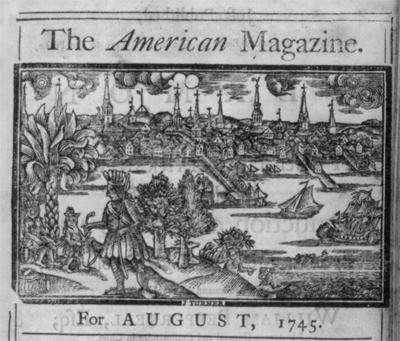
|
View Larger Image |
James Turner engraving, 1745 The most notable features of the town of Boston, as depicted here, a few years before Elizabeth Murray arrived, are its numerous steeples and long wharves jutting into the bay. These elements suggest the orientation of the town toward the sea and the significance of both church and commerce. Visible on the Long Wharf, which extended 2,100 feet, are the brick warehouses constructed along one side by the merchants who funded the wharf’s construction in 1711-1713. Passengers disembarking from ships docked on the south side of the wharf walked by these buildings, full of the newest imported goods from Great Britain. These buildings are also clearly detailed in Paul Revere’s 1770 engraving. The wharf was widened in 1763. Elizabeth Murray’s third husband, Ralph Inman, had a warehouse on Green’s Wharf. For details on Boston’s wharves and mercantile community, see Carl Bridenbaugh, Cities In Revolt: Urban Life in America, 1743-1776 (New York: Oxford University Press, 1955), 38, 247. |
||
|
|||
 "View of Boston harbor," engraving by James Turner, 1745, Courtesy, American Antiquarian Society
"View of Boston harbor," engraving by James Turner, 1745, Courtesy, American Antiquarian Society

